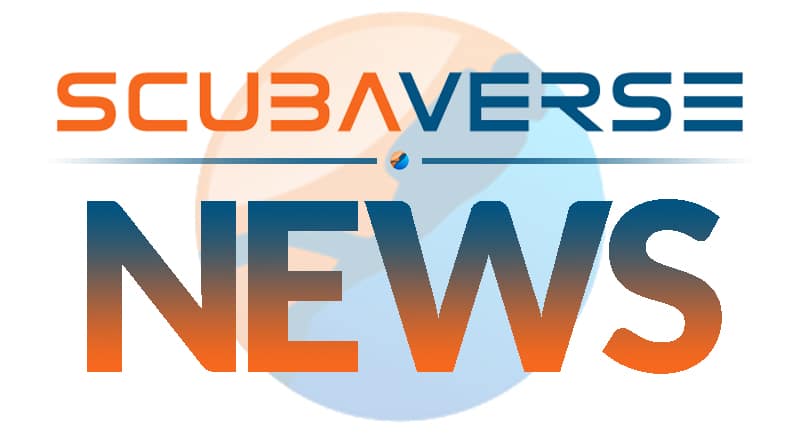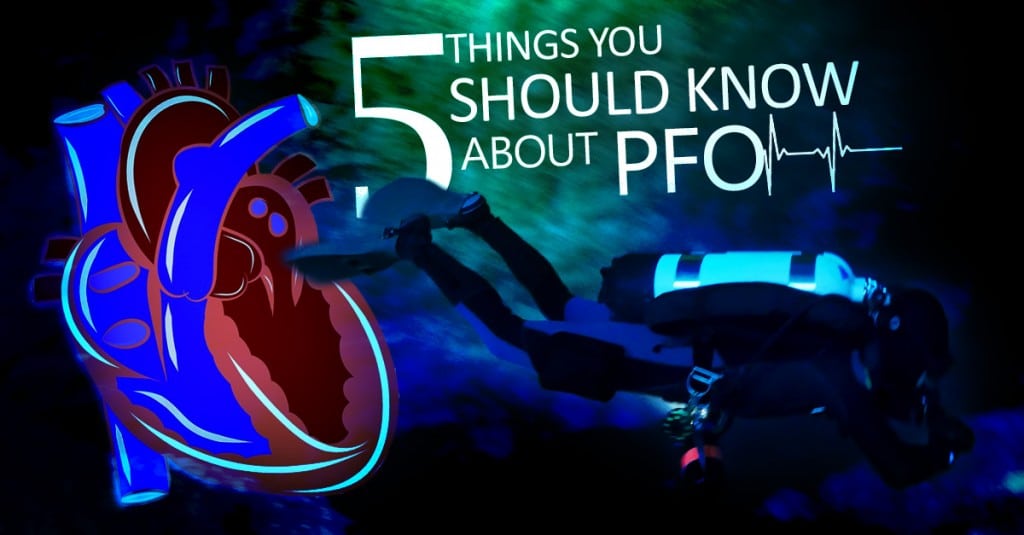News
Record 53 hour session in hyperbaric chamber saves diver’s life
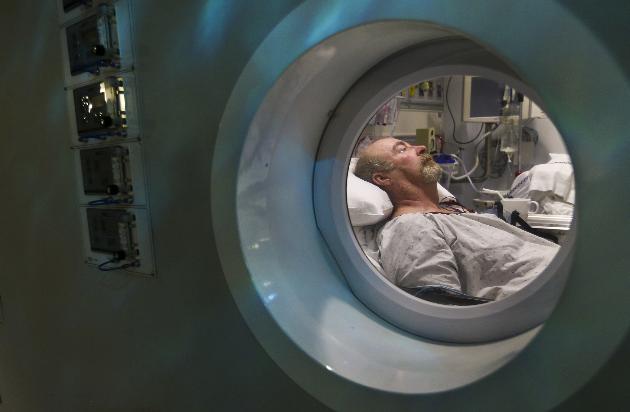
Thanks to some quick thinking by doctors and a handy US Navy Diving manual, a recent record breaking long-haul stay in a hyperbaric chamber saved the life of a Michigan diver…
“What I was worried about the most was holding my breath if I panicked,” said 64-year-old Begnoche, as holding your breath while ascending rapidly could cause a fatal lung embolism. “Panic is what really kills people.”
Last month Begnoche and other volunteers dived a shipwreck to capture footage off the coast of Grand Marais, Michigan. After he was pulled onto the boat, he started feeling prickly sensations in his body and he lost control of his arms and legs. His rapid ascent caused nitrogen bubbles to form in his bloodstream, cutting off blood to his spinal cord and other parts of his body.
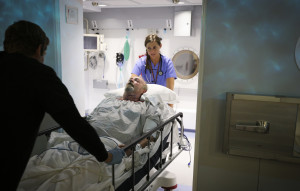 His decompression sickness was so severe that saving Begnoche required a helicopter rescue to Marquette, Michigan and then a low-altitude flight to Hennepin County Medical Center in Minneapolis, where doctors tried a rare treatment protocol which they found in the U.S. Navy’s Diving Manual.
His decompression sickness was so severe that saving Begnoche required a helicopter rescue to Marquette, Michigan and then a low-altitude flight to Hennepin County Medical Center in Minneapolis, where doctors tried a rare treatment protocol which they found in the U.S. Navy’s Diving Manual.
Along with a nurse, Begnoche spent a record 53 hours in HCMC’s hyperbaric chamber to give his body a chance to slowly clear out the damaging nitrogen bubbles.
“It’s really rare to have to do that protocol for a couple of reasons,” said Dr. Chris Logue, medical director of HCMC’s center for hyperbaric medicine. “One is that most people die. They never make it to treatment.”
Begnoche was like a “human soda bottle” that had been shaken up, Logue said, and caregivers needed to figure out how to deflate the bubbles.
Most of the time, HCMC’s hyperbaric chamber simulates a depth pressure of 45 feet to 60 feet below the surface and promotes healing by creating an oxygen-rich environment for patients suffering severe wounds or conditions such as anemia or carbon monoxide poisoning.
In this instance, Logue needed to simulate a depth of 165 feet — only 10 feet above the chamber’s maximum limit — to mimic Begnoche’s actual dive depth. That would drive the nitrogen in his body from bubbles into a solution and allow it to escape his body slowly and safely.
That’s what would have happened naturally if Begnoche ascended slowly from the lake as planned, with three or four decompression stops on the way to the surface.
Nurse Kimberlee Nerling, who was in the chamber with Begnoche the entire time, said she noticed immediate movement in the man’s arms when the chamber reached its maximum depth.
Begnoche has since regained control of his arms, and concerns about his lung functioning are over. But the semi-retired environmental manager and university lecturer can’t walk or move his legs yet.
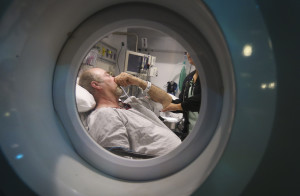 He is receiving additional daily treatments in the hyperbaric chamber in the hopes that they will stimulate healing and reduce inflammation in his spinal cord. Whether he will make a full recovery is, as yet, uncertain.
He is receiving additional daily treatments in the hyperbaric chamber in the hopes that they will stimulate healing and reduce inflammation in his spinal cord. Whether he will make a full recovery is, as yet, uncertain.
“It’s such a rare event, it’s impossible to tell,” Logue said. “What we’ve gained back, I’m thrilled about.”
Begnoche, who lives in Michigan, watched films during his two-plus days in the chamber. He struggled to sleep and replayed how the dive went wrong in his mind.
Loaded with underwater lighting and a video camera to examine the recently discovered Nelson, a three-masted schooner that sank off the coast of Grand Marais, Michigan in 1899, Begnoche had neglected to put on a weight that would have otherwise controlled his ascent. The project was part of his work with the Great Lakes Shipwreck Museum.
Given the amount of oxygen in his tank, he had only 20 minutes to spend by the ship. At 19 minutes, just to play it safe, he started to rise and pointed the video camera back down at the ship on the lake’s floor. That’s when he noticed how rapidly he rose past another diver.
With 40 years of experience and numerous deep-water dives, Begnoche knew he couldn’t stop his momentum.
“I was doing everything I could do to push any air out of the suit or any buoyancy devices that I had,” he said, but with the pressure decreasing and the gasses in his suit and his body expanding, it was “like a self-fulfilling prophecy.”
When he reached the surface, Begnoche immediately submerged a few feet to try to decompress and then returned to the boat when his oxygen tank was nearly empty. A Coast Guard helicopter was dispatched along with a boat.
Flying Begnoche to Minneapolis was complicated, because a high-altitude flight would have worsened his decompression sickness. So the pilot was ordered to keep the plane below 800 feet.
Having never spent more than three hours in the hyperbaric chamber before, nurse Nerling was in for an unusual shift. The 53 hours in the chamber was necessary for her as well. Bringing them out of a simulated depth of 165 feet any faster would have caused her to suffer decompression sickness.
So Nerling made sure her daughter could stay with her father and grabbed a textbook she needed to study for an upcoming nurse practitioner exam.
“It’s just me and you,” she told Begnoche in the chamber.
Once the air pressure in the chamber rose back to a simulated depth of 60 feet, additional caregivers were allowed in so that Nerling could rest.
Begnoche said he is grateful for the help he received in the lake, for the national Divers Alert Network that assessed his injuries and referred him to HCMC, and for the proximity of the hyperbaric chamber in Minneapolis.
He hopes that continued hyperbaric treatments along with physical therapy will help him regain strength, but he’s also worried. In the water, his expertise helped him focus and stay calm. In the hospital, he is burdened with the knowledge of just how devastating a rapid ascent can be to the body.
“It’s scary,” he said, “especially when you know what’s going on and what could have happened”
Source: www.startribune.com
Photos: Renee Jones Schneider
Blogs
EXCLUSIVE: Jeff Goodman interviews Mark Spiers, CEO of New Scuba Diving Training Agency NovoScuba

In a video recorded exclusively for Scubaverse.com, Jeff Goodman interviews Mark Spiers, CEO of new scuba diving training agency NovoScuba.
Find out more about NovoScuba at www.novoscuba.com.
News
Charting New Waters; NovoScuba Goes Global with the Launch of their Revolutionary Dive Training Agency!
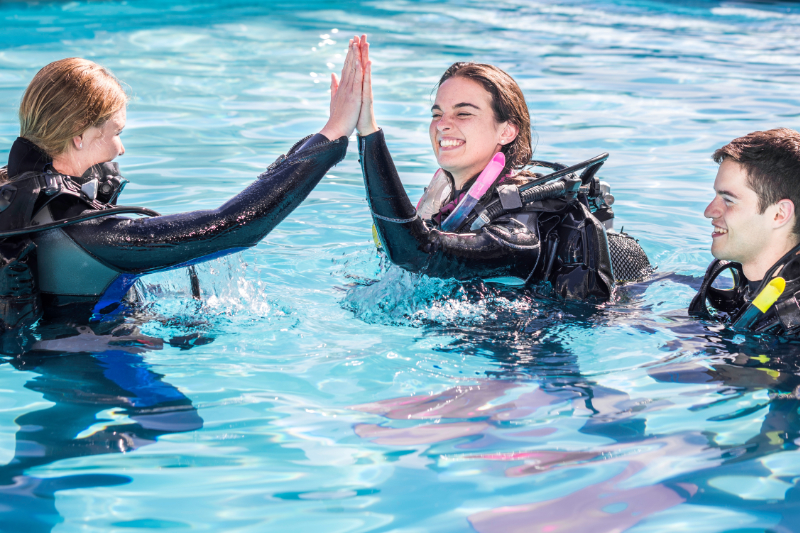
Discover a New Era of Dive Education: NovoScuba Brings Innovation to the Surface! Fully ISO Certified and Equipped with Cutting-Edge Technology.
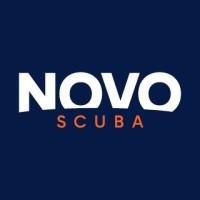 With a combined experience spanning over a century in the diving industry, a team of accomplished dive store owners, managers, and professionals unveils NovoScuba, a ground-breaking dive training agency poised to redefine the benchmarks of underwater education. Launching in May 2024, NovoScuba promises a revolutionary approach to dive training. Their vision is to make diving accessible to everyone, share success within the dive community and emphasise positive interactions with the planet.
With a combined experience spanning over a century in the diving industry, a team of accomplished dive store owners, managers, and professionals unveils NovoScuba, a ground-breaking dive training agency poised to redefine the benchmarks of underwater education. Launching in May 2024, NovoScuba promises a revolutionary approach to dive training. Their vision is to make diving accessible to everyone, share success within the dive community and emphasise positive interactions with the planet.
NovoScuba’s global debut marks a significant milestone in the dive industry. Driven by a vision to challenge convention and harness the power of technology, NovoScuba aims to revolutionise the dive training landscape through its innovative business model, which is digitally native, making it the most technologically advanced dive training agency to date.
“We recognised the need for change in the dive training industry and saw an opportunity to leverage technology, and redefine existing business models to create something truly innovative,” said Mark Spiers, CEO of NovoScuba.
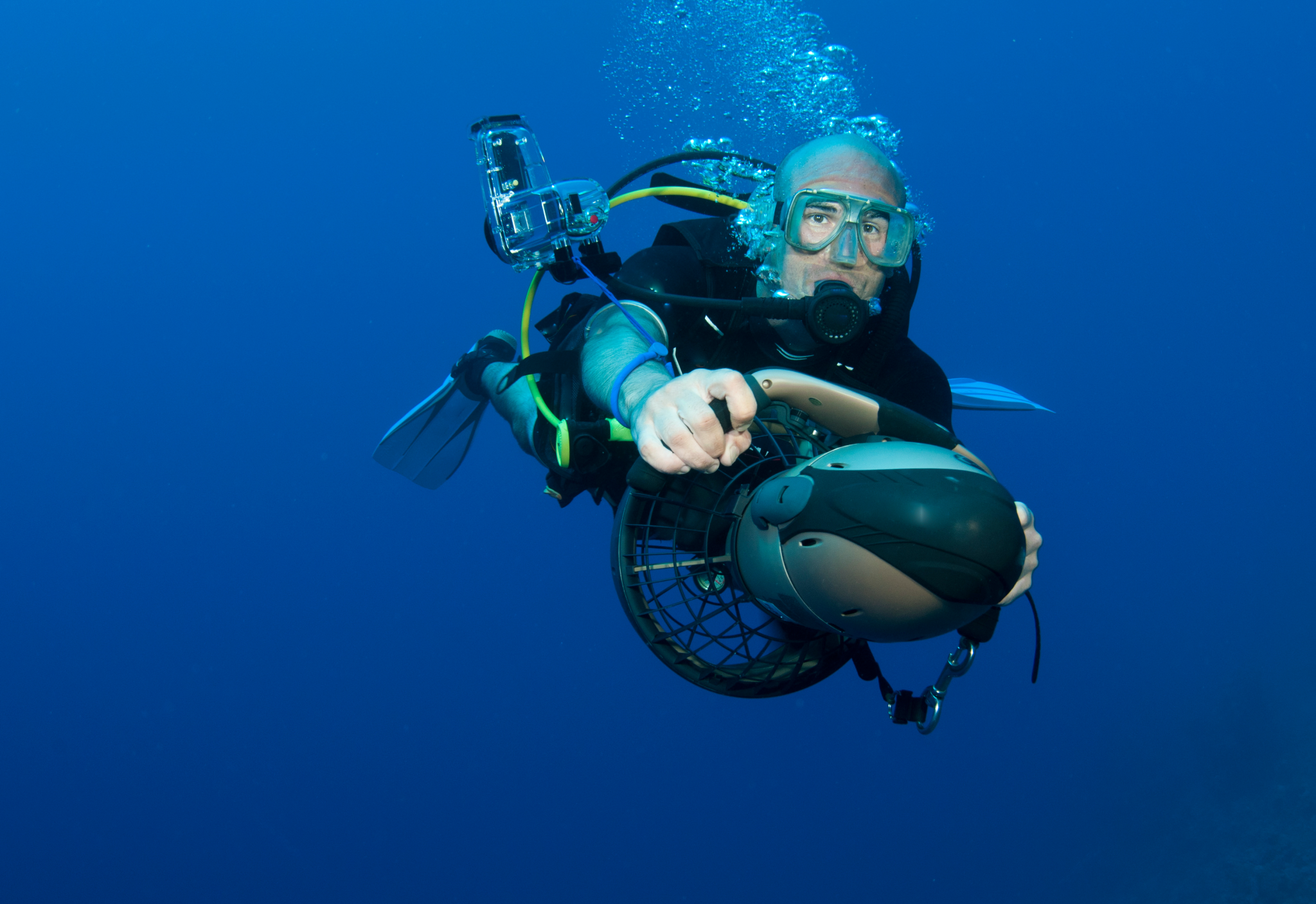
NovoScuba’s platform offers state of the art training programmes ranging from introductory up to professional diving, including various specialties. All programmes meet international standards and ISO certifications are in place. This commitment to shared success, accessibility and positive results for the planet, all at a cost effective and affordable level, is what will make NovoScuba stand out.
“Our deep understanding of traditional pain points for the industry, combined with our digitally native approach positions NovoScuba as a game-changer in dive education. Offering unparalleled initiatives such as student subscription, open access to all course materials, pay as you certify, no stock required, monthly membership payments, payment in local currencies, one-click certifications, and membership freezing, NovoScuba is set to redefine the industry. Available in 13 languages, at launch, the NovoScuba courses are written for the modern divers, with a focus on up-to-date content, interactive learning, and an engaging platform,” Mark Spiers concluded.
NovoScuba is challenging a change in the industry, redefining established traditional systems, and ushering in a new standard of excellence, support, and partnership. Their collaborations with dive stores, pros and underwater enthusiasts won’t demand exclusivity, prioritising earned loyalty, and an understanding that their Member’s success is key to their own.
NovoScuba
Diving Redefined.
-

 News3 months ago
News3 months agoCapturing Critters in Lembeh Underwater Photography Workshop 2024: Event Roundup
-

 Marine Life & Conservation Blogs3 months ago
Marine Life & Conservation Blogs3 months agoCreature Feature: Swell Sharks
-

 Blogs2 months ago
Blogs2 months agoMurex Resorts: Passport to Paradise!
-

 Blogs2 months ago
Blogs2 months agoDiver Discovering Whale Skeletons Beneath Ice Judged World’s Best Underwater Photograph
-

 Gear Reviews3 weeks ago
Gear Reviews3 weeks agoGEAR REVIEW – Revolutionising Diving Comfort: The Sharkskin T2 Chillproof Suit
-

 Gear Reviews3 months ago
Gear Reviews3 months agoGear Review: Oceanic+ Dive Housing for iPhone
-

 Marine Life & Conservation2 months ago
Marine Life & Conservation2 months agoSave the Manatee Club launches brand new webcams at Silver Springs State Park, Florida
-

 News2 months ago
News2 months agoPADI Teams Up with Wellness Brand Neuro to Drive Ocean Change and Create a Blue State of Mind



